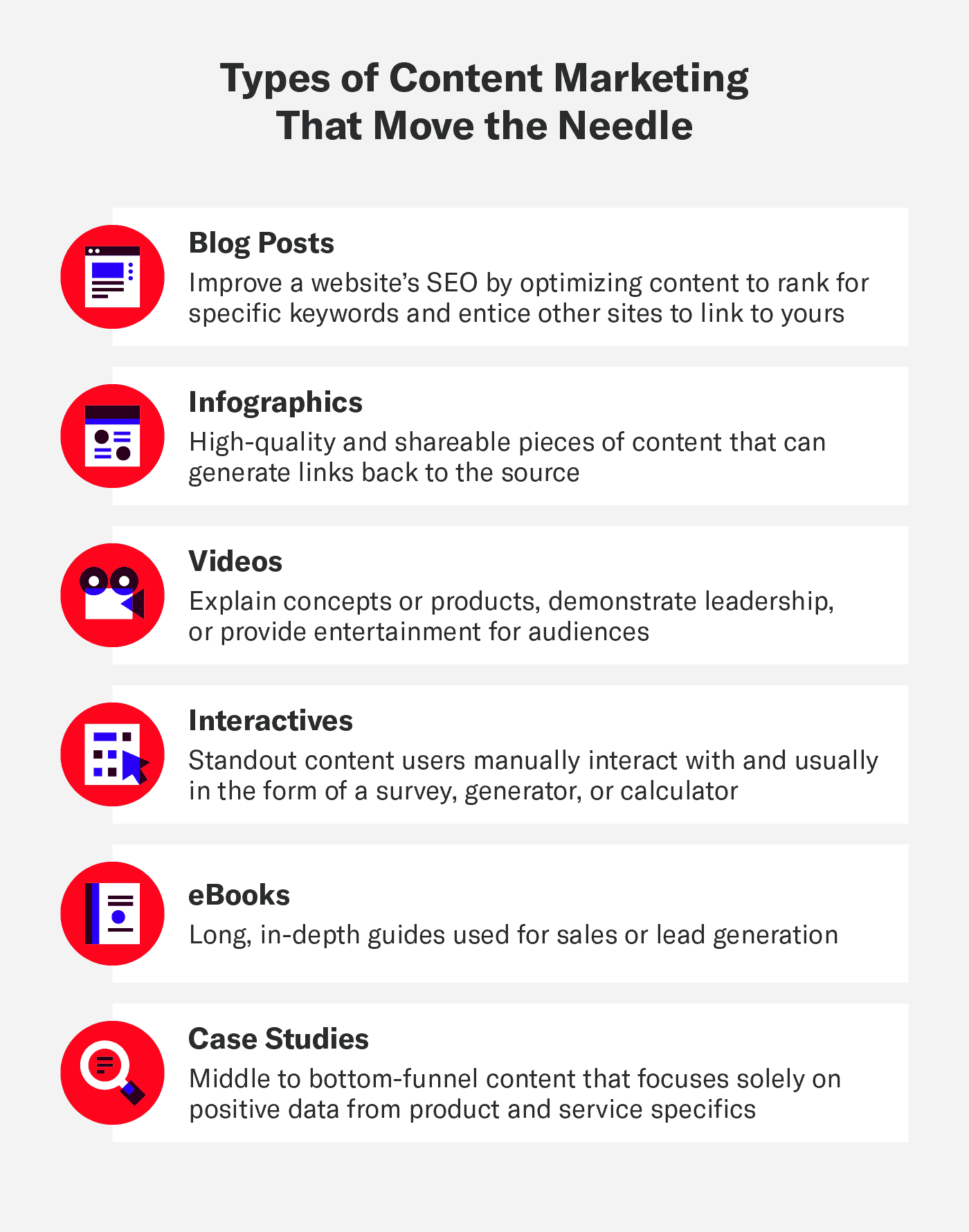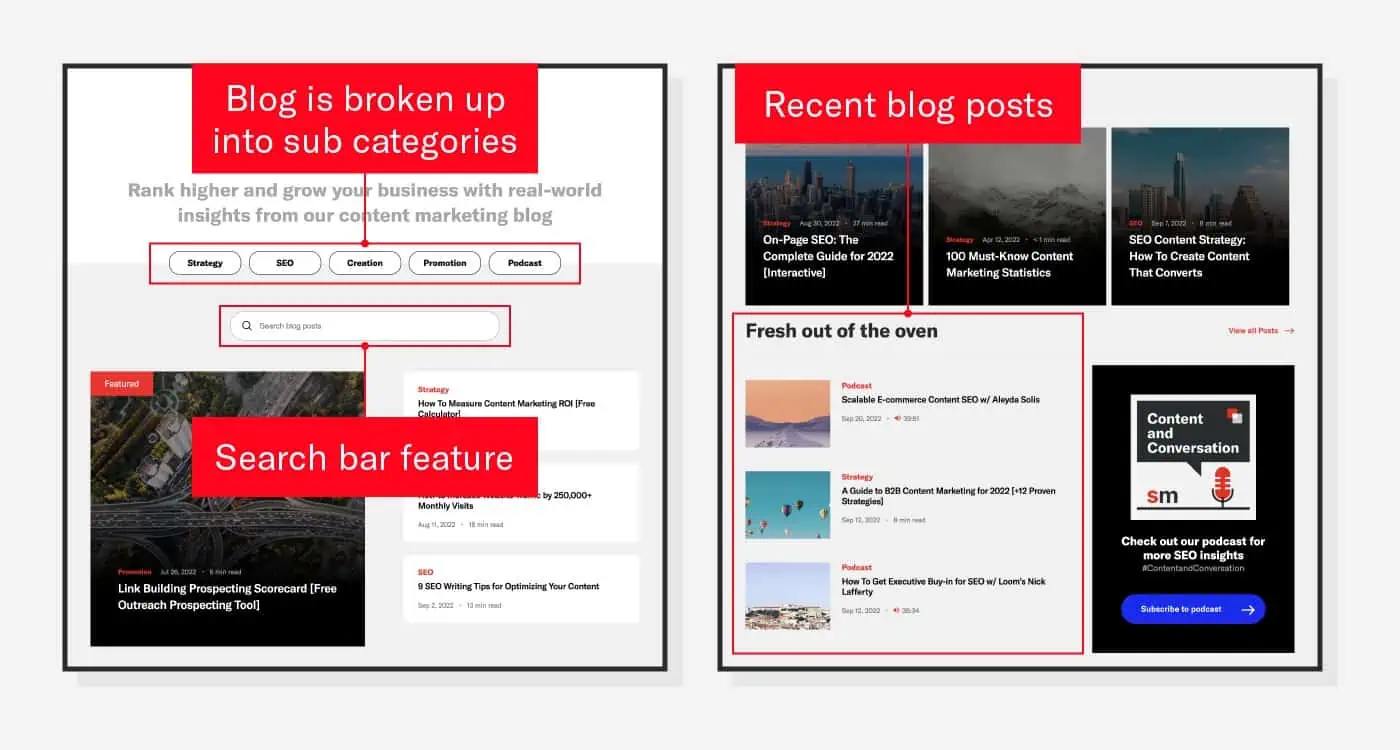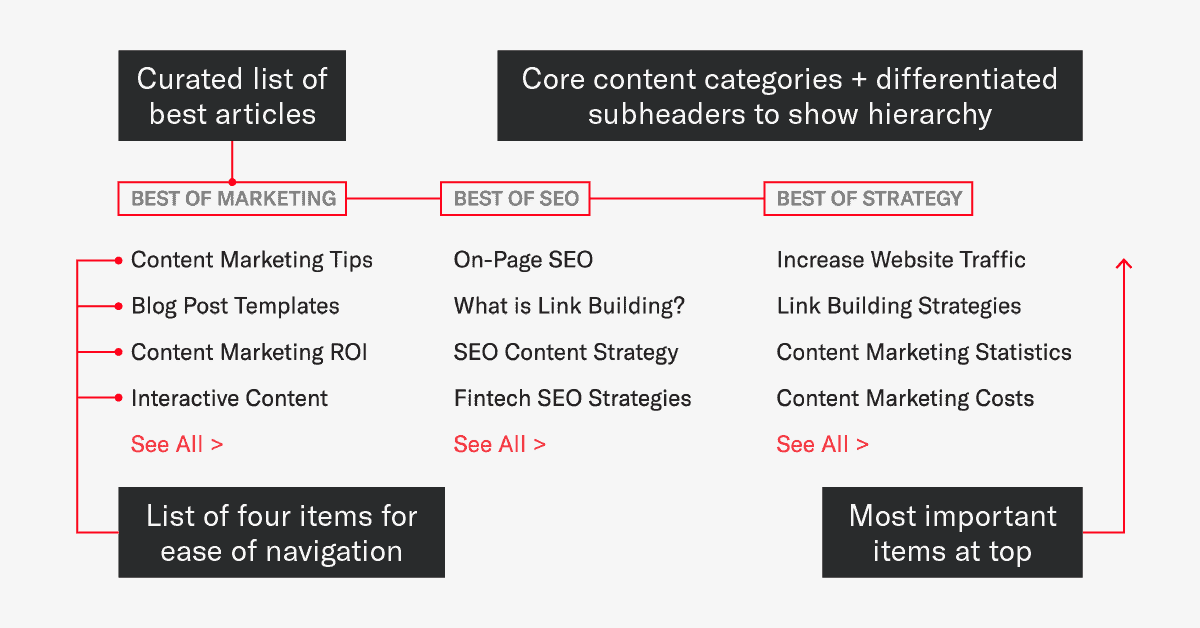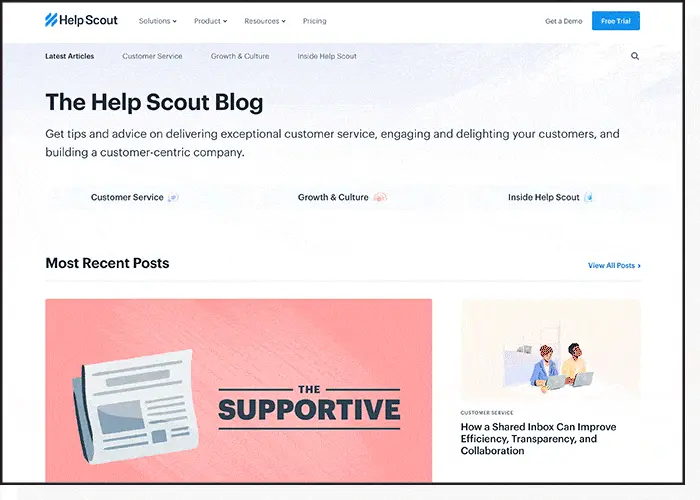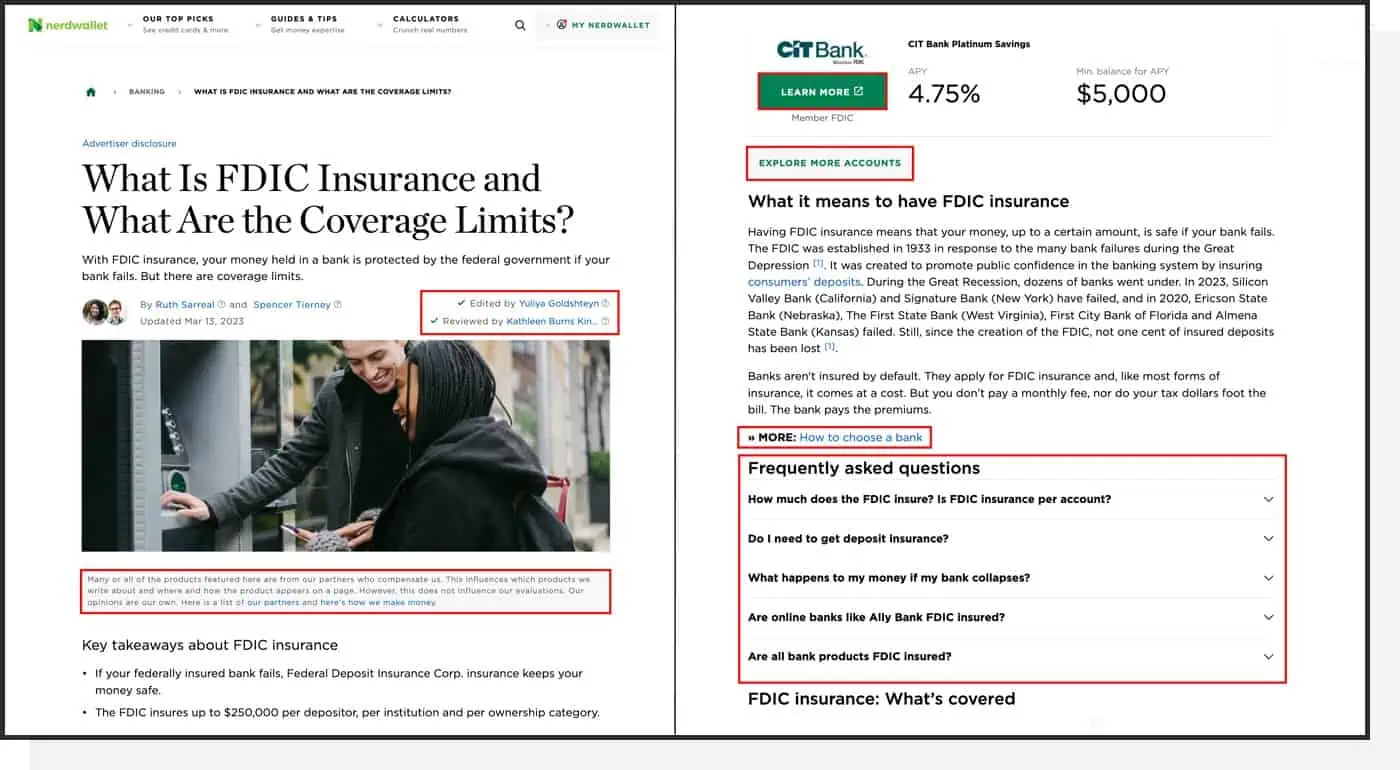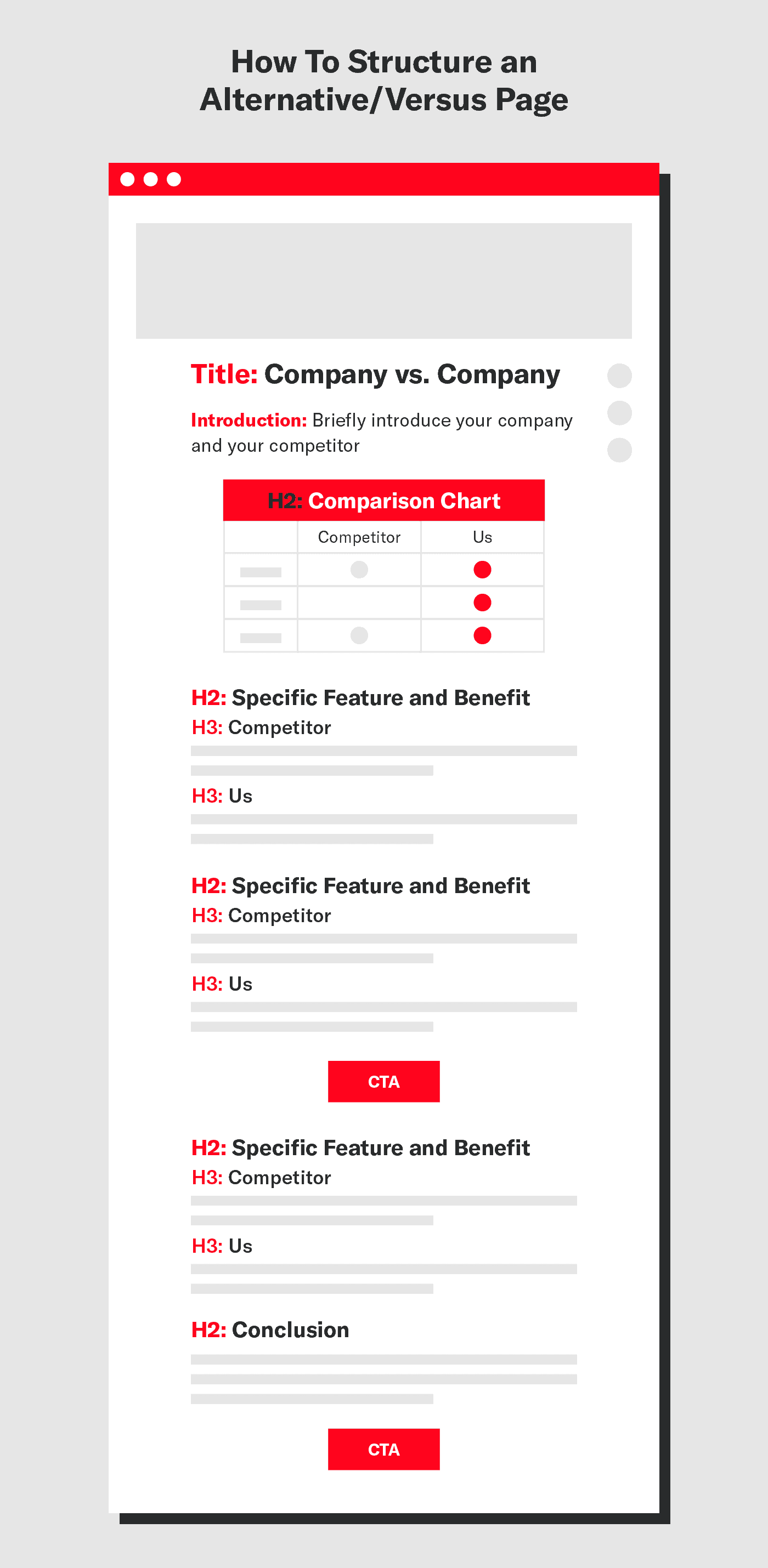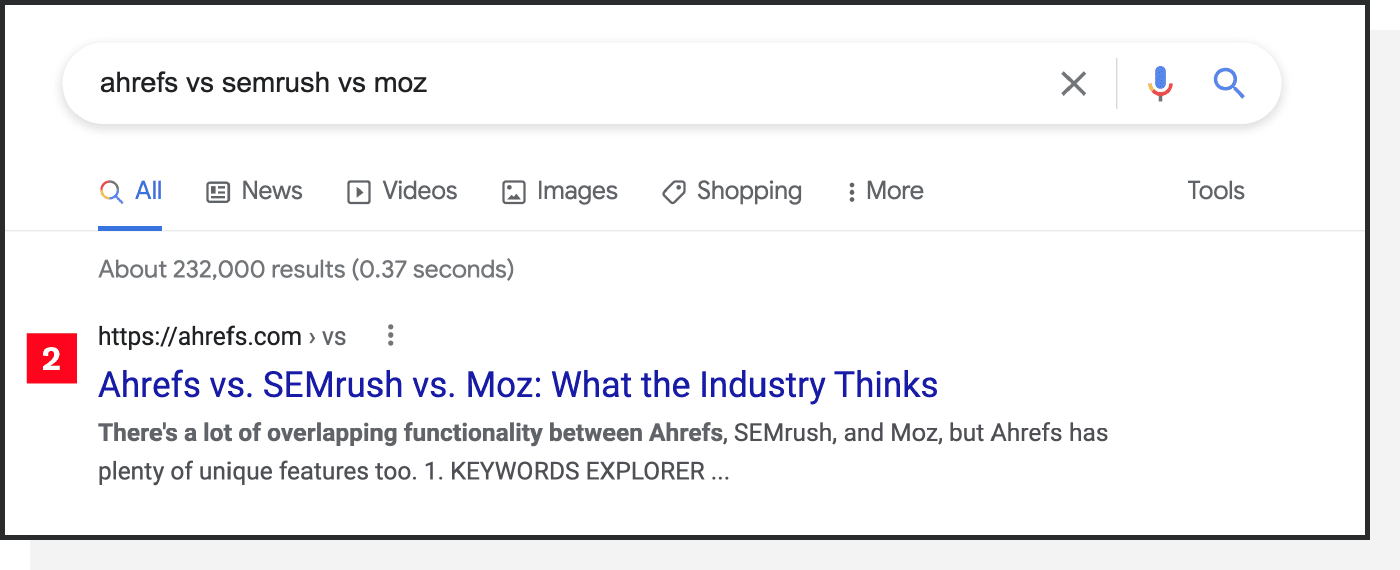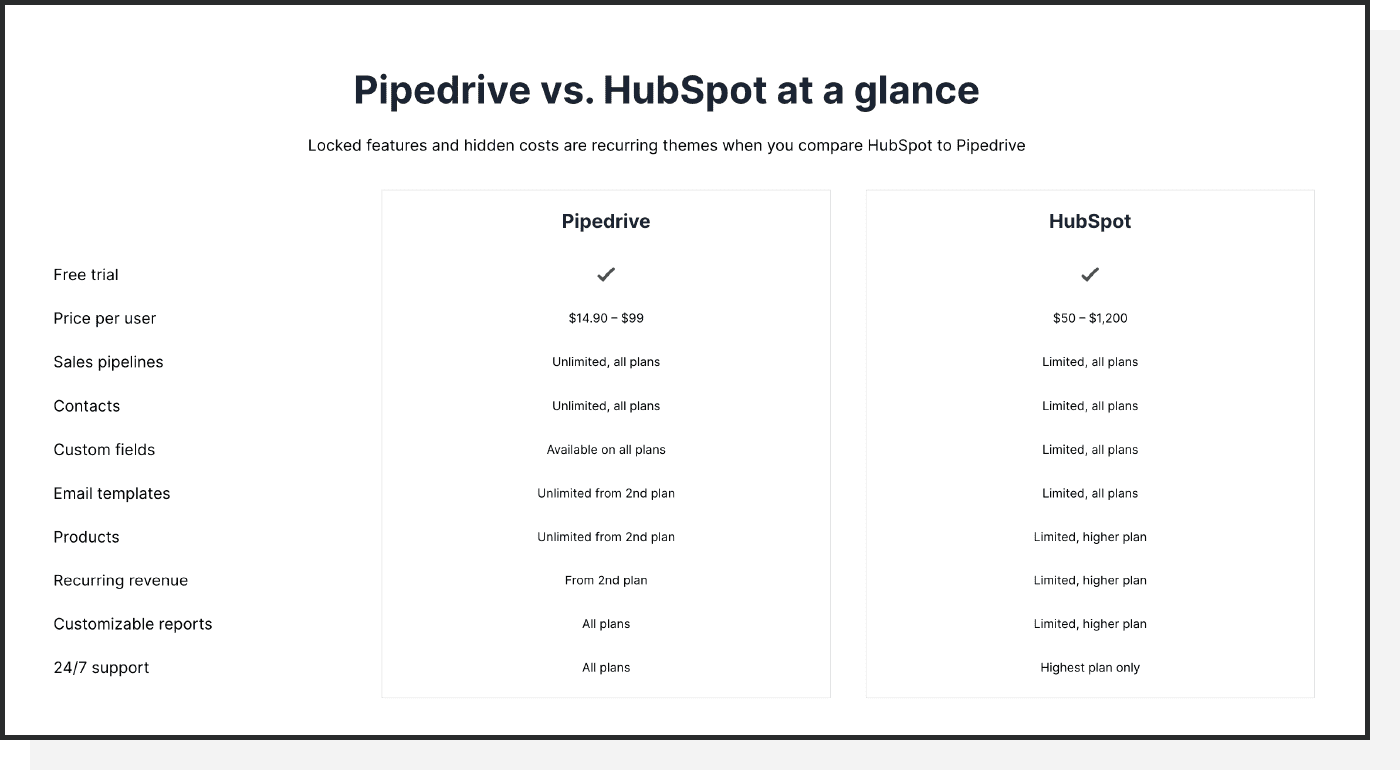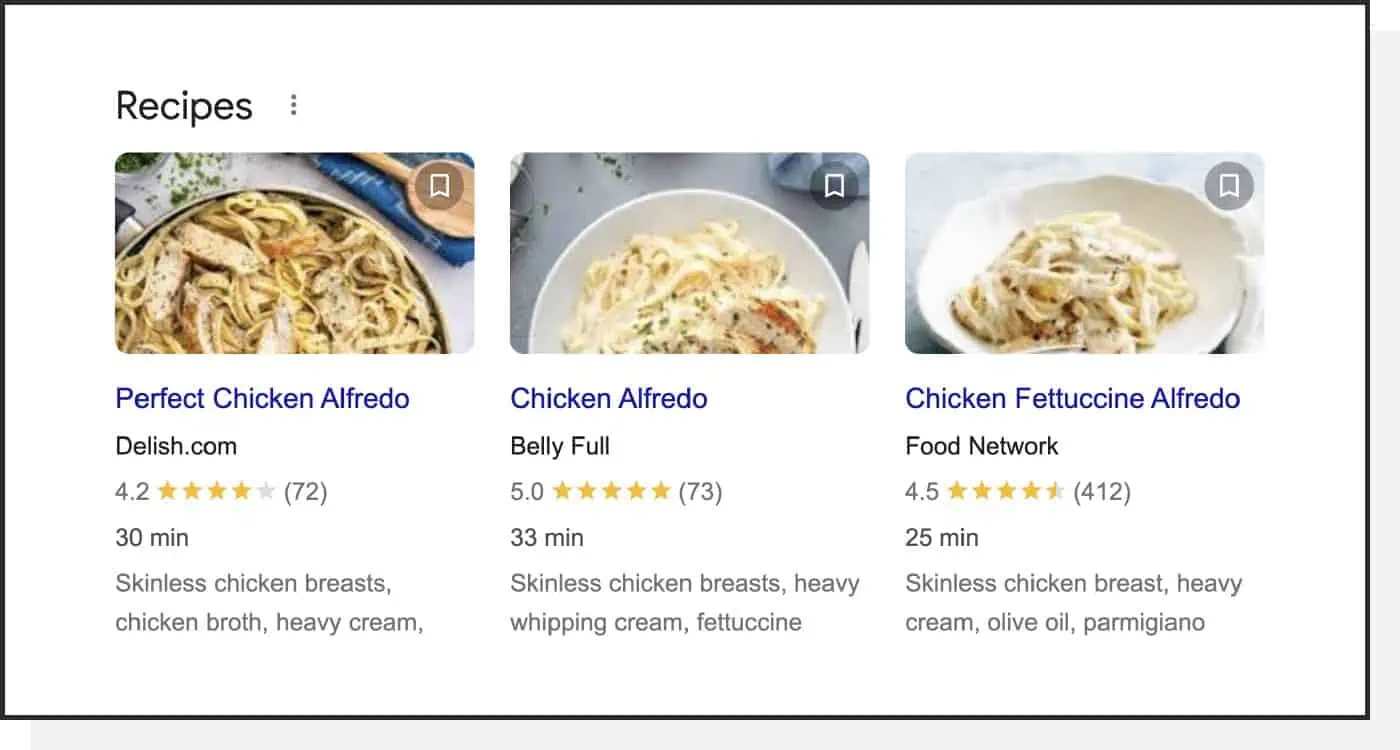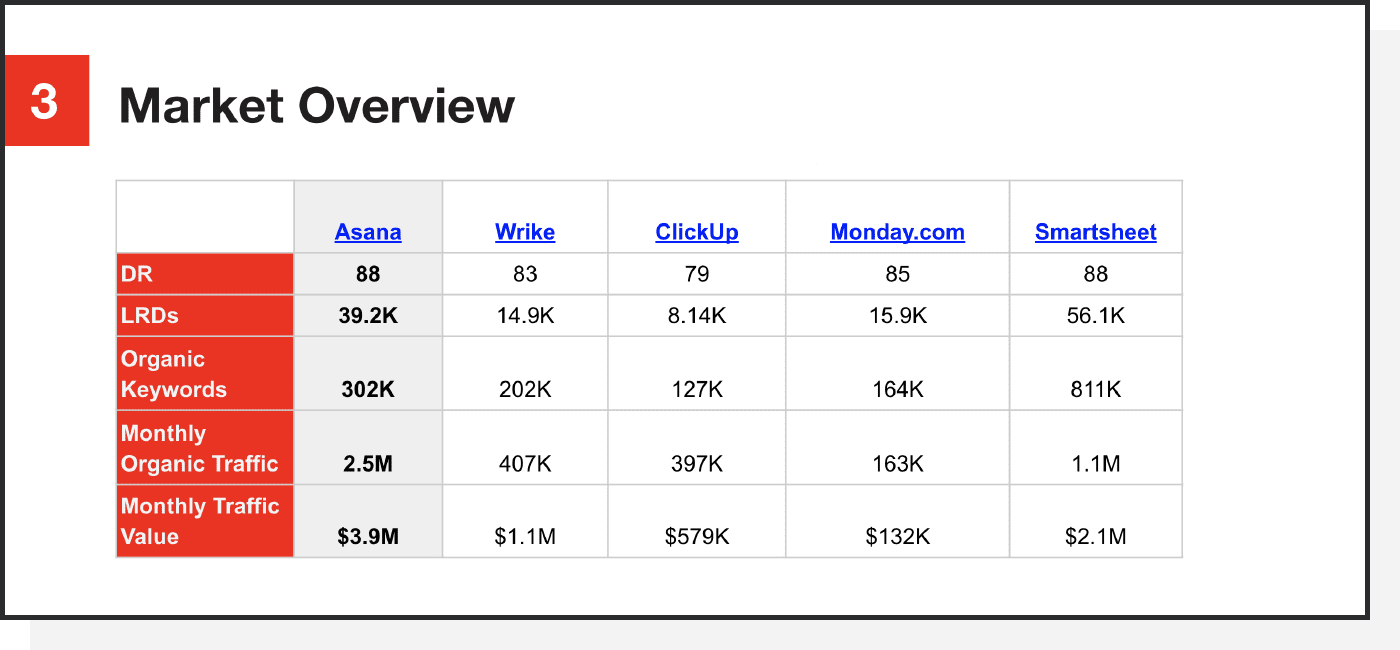Google and other search engines are constantly improving — the same should go for your content marketing strategy.
As marketers, we must stay up to date with all the latest algorithm changes, content trends, and queries from our target audience.
Although pivoting your current strategy and/or continuously implementing new tactics can feel overwhelming when trying to drive traffic and boost leads, developing a solid content strategy is worth it long term and will help you hit those KPIs like a well-oiled machine.
Not sure where to start?
We’re here to walk you through the basics of a strong content marketing strategy while providing you with real case studies and a framework to build out your own marketing plan.
Table of Contents:
- What Is Content Strategy?
- Why Is Developing a Content Strategy Important?
- Content Strategy Examples
- How To Create a Content Strategy Framework
What Is Content Strategy?
Content strategy combines SEO and content marketing to identify the content that will bring the most value to your business.
To create a highly effective content strategy, you’ll need to consider your brand, competitors, and the market.
- Brand: Your brand is essentially who you are — think about your mission, voice, values, and target audience.
- Competitors: Look at what your competitors are doing well, review their content, and think about ways you can improve it.
- Market: Analyze the overall market and see how much growth is possible and which topics are the most relevant to your business.
Before we get into how to execute a content strategy, let’s first check out the different types of content you can deploy below.
Why Is Developing a Content Strategy Important?
Developing a content strategy is important because it helps you reach your business KPIs as quickly and effectively as possible. Amateur marketers cut corners with content creation or don’t plan out their posts, which is why they typically don’t get the same long-term results.
A sound content strategy relies heavily on audience research. By creating content you know your audience is interested in, you can dominate industry keywords, generate conversions, and increase the ROI of your content marketing investment.
Support Your Business Goals
Content strategies allow you to track your efforts and see how they impact your business goals.
For example, if you’re a B2B company focusing on increasing conversions, a content strategy centered around creating bottom-funnel tools and content that helps your readers do a specific job is a good bet. This will also position your brand as an authority.
Test Out New Methods
Laying out your content plans will allow you to see what’s working and what’s not. Think about what creative content and topics get the most traffic, what is converting, if there are any themes in your content types, and which content isn’t performing as well.
Publish More Consistently
Publishing one-off pieces rarely moves the needle. Creating a strategy helps you schedule consistent content, giving you a clear direction for your goals.
When deciding your publishing frequency, think about your traffic goals, the competitor, your time frame for hitting your goals, and what resources you have ready to execute now.
Stay Organized
Creating a content strategy will help you keep track of your team’s work and stay on top of holidays, seasons, and content trends. For example, a real estate site should be posting consistently while the housing market is the hottest to capitalize on industry buzz.
Content Strategy Examples
Not every business should have the same content strategy — certain tactics might work better for one brand over another.
Nevertheless, there are tried-and-true content strategies you can customize to your industry and niche. To better understand where these opportunities lie, let’s jump into some business-driven examples.
Blog
Best for: B2B and B2C companies
A common content strategy example is implementing blog design and hub best practices.
Blog optimization is important so more people can find your site and boost overall traffic. It’s also a great way to map out development ideas to improve the user experience.
If you’re looking to optimize your blog even further, visit our in-depth post on blog design best practices for SEO.
Blog Navigation Best Practices
Review your site’s current navigation for opportunities to optimize the blog drop-down. Audit for the following elements that are key for a high-performing navigation to ensure you are promoting an overall good user experience:
- Include a link to each core content category.
- Change the font of subheaders to help show hierarchy.
- Curate “best of” content list or most recent blogs.
- Avoid including more than seven items vertically for ease of navigation.
- Keep most important items top-down, as they are most likely to be clicked.
Blog Index Best Practices
Blog indexes display all blog posts regardless of category, tag, author, or publishing date. Examples of blog index best practices include:
- Include a search function to let users quickly find what they want.
- Highlight most recent blog posts for freshness, preferably at the top, or you can go the “library” approach.
- Create a curated section and select popular SEO posts to boost users and links. The closer to the homepage something is, the better it’s likely to perform.
- Have a preview list of a few articles from each category, ideally the most recent pieces.
- Choose thumbnails with plenty of variety to maintain visual interest.
An example of a site that does a good job of using blog index best practices is Help Scout. Here are a few blog best practices they implemented that have helped them bring in 400,000+ in monthly organic visits:
- Include a search function.
- Add a library of most recent posts.
- Create visually appealing thumbnails.
- Include a preview list of articles from each blog category.
Category Page Best Practices
Category pages aren’t very different from a blog hub except they are customized sections for a specific category or display of different content.
Category pages try to accomplish visual differences from the homepage to maintain entertainment. They are ideally one to two sentences of descriptive copy on top of the category name to build uniqueness for SEO.
An example of a category page is Semrush’s blog that’s broken down into the following categories:
- SEO
- Advanced SEO
- Channels
- Content
- Marketing
- News and research
- Semrush
Blog Post Best Practices
Your blog posts are where the magic really happens — this is where you should spend most of your time to create something different.
Here are a few features to try to stay competitive and build a blog post that’s great:
- A “quick answer” area that provides users with the answer to their query, fast.
- Include unique HTML elements that allow for scaled quality for blog content.
- Add a relevant call to action post-body and/or a narrow header with a sign-up button with contrast that follows you.
- The text is readable (16px+, ideally 18px+), legible (not gray on white), and column width makes it easy and pleasurable to track to the second line (ideally 50-60 pixels, or ~75 characters).
- Include related links to 3-4 posts, but consider image size for page speed.
- Include an effect on hover, and give related linking thumbnails 18px+ font for readability.
A good example of blog post best practices is NerdWallet because they utilize frequently asked questions, related readings, and call-to-action buttons, plus making sure their text is readable and there is an effect when you hover over a section.
Comparison and Versus Pages
Best for: B2B SaaS companies
If you’re in the B2B content marketing industry, we’ve got content strategy examples for you. If you are not in the B2B space, continue reading onto the next section.
Building comparison and versus pages works well for B2B companies since they are prime bottom-funnel opportunities.
Pages that highlight alternatives to competitors are typically low volume but high value. It’s important to build these search queries into pages to keep users on your site and improve the likelihood of conversion.
As an example, if you search “Ahrefs vs. Semrush vs. Moz,” you’ll see that Ahrefs ranks #2. Ranking for this keyword allows Ahrefs to own the conversation before Semrush, Moz, or any other third party that can add to the conversation, which drives more conversions for their brand.
The easiest way to conduct keyword research for comparison purposes is to go to Google and insert your brand or competitor and add “vs.” to see the results in the waterfall dropdown.
You can also build comparison pages of “competitor vs. competitor” to get your name out there if a potential customer hasn’t heard of you (yet). By conducting this research, you might discover alternative pages that may be worth building separate pages for.
You might also want to build out a hub to make it easier to internally link to these pages. If you prefer to avoid mentioning your competitors’ names in the navigation or footer, linking to a comparison hub in the footer is a way to lower friction.
When it comes to executing this content strategy example, it’s important to always include a crawlable chart to make it easier for users to find quick, scannable information.
Long-Form Content
Best for: B2B, B2C, and SaaS companies
When it comes to a content strategy, creating long-form guides should be at the forefront to show your audience you are the expert on certain topics.
These long-form guides are intended to thoroughly explain a topic from start to finish, and are the perfect opportunity to cover multiple long-tail keywords and related ideas in one post.
Long-form guides are also used to build authority among readers. Providing folks with all the information they’re looking for and then some can create trust. Over time, the creation of these long-form guides will help your authority and could even boost your domain rating.
However, the creation of long-form guides isn’t always for ranking purposes. User intent should be the driving force behind these posts.
Long-form guides resonate more with readers and result in lower bounce rates because you’re providing them with all of the information they’re searching for.
Here are a few things to include in your one-stop shop posts:
- Provide real value instead of rambling and creating a fluff piece.
- Look for ways to break up the text using bullets, numbered lists, and headings.
- Include post images throughout the piece to keep readers engaged and break up longer sections.
- Strategically place CTAs to help drive conversions for readers who might skim through the page.
This post from Gallant was intended to help them add more credibility to their brand and educate their customers. As a result of creating pet marketing content, Gallant grew 80,000 monthly organic visits, which is at an estimated monthly value of $64,500.
Interactive Content
Best for: Fintech — industries whose audiences have a job to get done
Plain text is so last year — interactive content is here to level up your marketing efforts with long-term results. Interactive content includes calculators, generators, quizzes, surveys, image sliders, and maps. What do they have in common?
Interactivity adds value for the end user. Here are a few benefits of developing interactive content:
- Increase in engagement due to people participating in an activity for a purpose based on a specific search query
- Increase in passive links due to being a magnet for link building and increased shareability
- Differentiate yourself among competitors by filling a gap and providing users something more useful than text-based content
For example, maybe parents are unsure what to name their newborn and are looking for a tool to help them ideate potential names. Instead of listing out a bunch of names, create a baby name generator for parents.
Or instead of writing a whole guide on grocery spending, you could create a tool readers can use to figure out their budget. Our team helped create a monthly grocery budget calculator that’s raking in 16,000+ monthly organic visitors and more than 450 links.
Schema
Best for: Brands that target a lot of recipe, how to, or FAQ-related searches
While implementing schema is often overlooked, it’s an important factor to consider including in your content strategy.
Schema markup is a way for search engines to better comprehend your content with the creation of enhanced descriptions or rich snippets — providing more context to your web pages overall.
What this means is that schema can improve your organic search rankings while making your content more prominent in the SERPs.
Here are a few common ways to use schema markups:
- Articles
- Events
- Products
- Local businesses
- Reviews
- Recipes
- Medical conditions
After you add the schema markup to your site, search engines like Google will display this information via Rich Snippets.
Multimedia
Best for: Brands that rely on visual content to reach their audience
Podcasts and video content are forms of multimedia that can take your content strategy to the next level.
Videos are versatile forms of content that connect with your audience on a face-to-face level. Viewers are able to gain a deeper understanding of the person or brand behind the product or service.
Podcasts and video content go hand in hand because you can repurpose the audio and turn it into its own entity. The podcast market is crowded, but you can dominate with expert insight. Unique niches thrive in the podcast space because folks are able to captivate their audience without the need for visual content.
Here are a few benefits of multimedia content:
- Capture the attention of your audience without text.
- Reach a wider audience across multiple platforms.
- Boost rankings on search engines that tend to favor video content.
This post from Kitchen Cabinet Kings educates their customers with the steps to easily measure for kitchen cabinets. As a result of creating video content, Kitchen Cabinet Kings received 289,000+ views.
Here are a couple other good examples of blog posts that use multimedia content:
How To Create a Content Strategy Framework
We know you just went through a ton of information surrounding content strategy examples. Now we’ll get into simple, quick steps on how to execute a more enticing lead-in.
Here at Siege Media, our first onboarding project for clients is to create a content strategy deliverable in the form of a slide presentation or PDF.
At a high level, this plan analyzes current content marketing efforts, pulls insights from industry competitors, and lists content types we know will make the biggest impact in terms of reaching specific goals.
To execute this, we analyze all copy on a website, gaps in the competition, and note ways to improve rankings.
Here are a few strategic sitewide improvements that will impact overall SEO content performance, including:
- Poor titles/URL structure
- Content freshness
- Post structure
- Number of links compared to competitors
- Level of expertise, experience, authority and trust (E-E-A-T)
- Design formatting issues
- On-page SEO
This allows us to get in front of potential roadblocks that might deter our content from ranking. Here’s a quick rundown of each step in this deliverable.
Market Overview
In this section we use Ahrefs data to dissect direct competitors and see how they stack up.
We use this data to see where competitors are winning from a domain authority, links, or traffic perspective. From there, we prioritize and allocate resources based on content goals.
Things to look for in Ahref’s domain comparison tool:
- Link velocity: how many links a competitor earns on average per month (number of links today minus the number of links last year divided by 12)
- Domain rating: how authoritative a website is and indirectly how easily they can rank for higher difficulty keywords
- Organic keywords: unique keywords for which the site ranks in the top 100 search engine results pages
- Monthly organic traffic: the traffic coming to a competitor’s website from their keywords that rank top 100
- Monthly traffic value: the equivalent value of a site’s organic search traffic if it had been acquired via Google Ads
Competitor Strategy Overview
This step is used to better understand the content strategy, content types, and content quality competitors use, in order to inform our scoping and any potential recommendations.
Here are a few questions and angles to consider when analyzing your competitors:
- Is the competitor’s strategy mostly keyword or link driven?
- Is their strategy based on quality or quantity?
- Are there pages that bring in a lot of blog traffic and why?
- How about their social media? Check if they promote blog posts on their social channels and where most of their traffic comes from.
- Are there themes/hubs/approaches that can be used as a source of inspiration?
- Where does this competitor get their data (e.g., own research vs. links out to other sources)?
- How do they establish trustworthiness with their readership (e.g., experts, editors, interviews, etc.)?
- How does this competitor include CTAs (e.g., how often, where, what format, etc.)?
- What does this competitor do well and how can you achieve similar/better results?
Blog Analysis
There is always room for improvement when it comes to content, which is why you should perform a content audit. Review your content to make sure it’s high converting and high performing.
Based on a recent Google content update, it’s more important than ever to continually audit your website content to cut out low-performing and off-topic content.
The most common opportunities we see with the biggest payoff involve analyzing pages that aren’t performing well. If any pages look outdated and could use a refresh, then add this opportunity to your content marketing plan.
However, you shouldn’t refresh each piece of content on a monthly basis — our general rule of thumb is to wait at least six months before diving deeper into your content’s analytics and figuring out what you need to change in a post.
Here are a few steps to updating older content:
- Conduct an audit: Look at posts that aren’t increasing traffic and conversion rates.
- Find content gaps: Look at how your content compares to what is currently ranking on the SERP.
- Refocus the content: Refresh outdated portions of the content to remaster it into a new and improved piece.
- Re-promote: Push the updated content to the top of your blog, promote on social, and add the link to other relevant content on your website.
The above information should give context to the type of content you should create most often.
In this section, we like to list out examples of that content as well as example outcomes.
For example, if your KPIs are highly focused around building links, and competitor research shows that significant passive links are earned through “what is” type posts, a good next step would be to consider exactly how definitions will display on your site and how they’ll look on your blog index.
Define Goals
This might seem obvious, but the first step to creating a content strategy is clearly defining your goals. Think about why you want to create content and the purpose of it.
A few examples of defining goals include:
- Want more links? Focus on a passive link strategy.
- Looking to improve trust/credibility? Stick to creating long-form guides.
- Trying to increase organic traffic? Prioritize optimizing your blog.
Conduct Audience Research
Your product and services are intended for a target audience, so your content should cater to these individuals. Again, it may feel obvious, but understanding your audience is key before you create your content.
Ask yourself the following questions to get started with audience research:
- What is your audience’s age group?
- Which income bracket do they fall under?
- How do they spend their free time?
- What is their career and where do they want to be?
- What are their likes and dislikes?
Execute a KOB Analysis
Now that you understand your audience and reviewed the competition, it’s time to find high-value topics. As we mentioned above, the keyword opposition to benefit analysis (KOB) is the step where you’ll identify topics within your industry with the highest ROI.
Start off using Google or your preferred search engine to conduct keyword research based on general terms related to your business. You can also review content your competitors are creating to see if it’s a good opportunity to outrank them or fill a potential gap.
From there, use keyword research tools like Ahrefs to analyze keywords related to your industry and the terms your competitors are ranking for. Make sure you are looking at low-difficulty topics that could generate passive links to your posts.
Run a Competitor Analysis and Content Audit
Entering the competition means you must run a competitor analysis to see how to level up your marketing efforts. Potential customers need to understand why they should choose your offerings versus competitors’.
Here at Siege, we conduct a comprehensive market and competitive analysis to identify our competitors’ strengths and pain points. This data helps us determine which pieces of content we think we should tackle in our KOB.
Here are a few things to consider when conducting competitor research:
- Figure out who your competitors are.
- Look at what products your competitors are offering.
- Analyze your competitors’ marketing efforts and ranking performance.
- Review any gaps in the market you can fill with your content.
Running a content audit is helpful to see if there are any pieces we can optimize to get them ranking better, kind of like low-hanging fruit. We can also see where we have gaps in the current content library compared to competitors.
If you want more tips on how to execute the best KOB analysis for your content strategy needs, check out the video below.
Identify Passive Link Opportunities
As an agency, we quit sending targeted cold emails each month to gain more links for our clients’ content in most cases.
We noticed the results were more significant when we were incorporating more search volume-driven content instead of the manual outreach method.
The method of acquiring links organically without manual outreach is called passive link acquisition. This content marketing strategy involves identifying low-difficulty topics that could generate links naturally and add value.
Pro Tip: Implementing this technique early on in a campaign can show high-quality results in a shorter time span.
We recommend looking at the following keyword frameworks:
- “Types of”
- “What is”
- “How to”
- “Ideas”
An example of this would be “types of coffee” for a coffee provider since this KW has high search volume and generates an average of over 80 links.
Build an SEO Roadmap
An SEO roadmap is essentially your content strategy that organizes your SEO-related tasks and prioritizes action items. Using the findings from your KOB, you can start mapping out your plan.
Here are the steps to creating your SEO roadmap:
- Use KOB research to map out your content while prioritizing passive link opportunities, content formats you want to focus on, and any scalable content topics.
- Brainstorm sharable topics that are unique but relevant to your business, and will ultimately solve a problem or answer a question for your audience.
- Maintain a consistent voice to build authority, express core values, and stick to your overall brand.
Track Performance
You’ve made it to the end — it’s time to start building out your content. Once you have a few pieces of content published, you can begin tracking= performance.
Here are a few tools you can use to track your content performance:
- Ahrefs: analyze keyword performance and link goals
- Google Analytics: track your performance and goals
- Google Search Console: review how your content is performing
Final Content Strategy Notes
Creating a content strategy is important to keep your marketing efforts fresh and innovative. The industry is constantly changing and requires regular strategy updates.
Now that you’re more familiar with content strategy examples, it’s time to level up your marketing efforts. You’ll be shocked by the results when you put these strategies into action.
Feel free to browse through our catalog of work to see how we’ve helped similar companies exceed their goals. If you’re still unsure which strategy to build out, contact our marketing team to see how we can help you level up your business.


